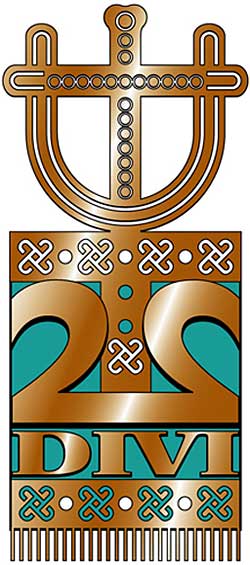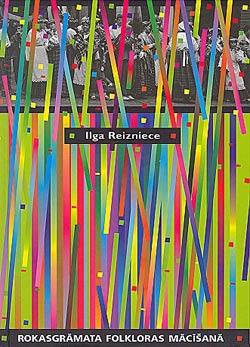How is Nov. 18 marked in the homeland? What does Latvia’s Independence Day mean to Latvians living in Latvia, 15 years after the renewal of independence? Is patriotism growing among the population? Is it being taught in some way to the younger generation—Latvia’s future “movers and shakers”?
I was keen to get answers to these questions as I celebrated Latvia’s Independence Day in Latvia, not on the other side of the world, as I usually do. Our family has temporarily moved to Latvia from Australia, to experience all the sights and sounds and smells and textures of Latvia for a full year.
One of the highlights of our trip has been to celebrate Nov. 18 in Rīga. In Australia, the Latvian community still considers this a sacred day. It is not really a day for celebration as such, but more reflection and reverence for the past and a sobering look at present-day Latvia, its achievements as well as its shortcomings. I will always associate Nov. 18 with the national anthem and long, official speeches. For me the word svinīgs (ceremonial) always comes to mind. Would the same feeling be evoked on this day while in Rīga?
On the 17th, the children’s school had its Nov. 18 commemoration. My kids had not had to learn to recite any patriotic poems this year, which already was a change from what I was used to back in Australia. Neither did they have to sing or dance, nor did they have to wear national costumes. So how were they going to take part? I soon found out. I was one of a handful of parents who attended this event in the school hall. Grades 1 and 2 were seated and treated to a concert by six Grade 5 and 6 Student Council members who recited a few patriotic songs and poems with instrumental music playing in the background. This was interspersed with a few Latvian folk dances by the school’s folk dance ensemble. The concert started with the national anthem, “Dievs, svētī Latviju!,” and ended with the song “Nevis slinkojot un pustot” by Andrejs Jurjāns,—25 minutes’ worth of patriotism. The kids were then led back to their classrooms where they celebrated with a kliņģeris (a traditional Latvian birthday cake) with red and white candles. Grades 3 and 4 were scheduled to attend the concert a half hour later. The meaning of Nov. 18 was later discussed in the classroom but our Grade 1 son “couldn’t remember” what they talked about.
Our 3-year-old son’s kindergarten in Rīga celebrated on Nov. 21. Relatives were invited to come and celebrate with the children. We sang a few songs, played a few games (rotaļas) and gathered around the table for honey on rye bread with milk. The table was decorated with a centerpiece of tea light candles in the shape of Latvia.
Every educational establishment has worked out its own tradition. This is a commendable thing, but do the kids “catch” the spirit of pride in their nation and of being Latvian? I hope they learn to get a warm and fuzzy feeling and a tear in their eye when they hear the national anthem or hear someone recite a patriotic poem. These minor details—all part of traditions that stem back to childhood—all play a big part in forming our weltanschauung later on in life.
Nov. 18 dawned with no signs of rain or snow. The streets were not only decorated with the compulsory Latvian flags but also with official banners of various kinds. Even the haberdashery shop across the road had put red-and-white sweaters and shawls in the window display! I switched on the TV and the kids’ programme had a feature on Nov. 18 with a well-known history teacher explaining the meaning of the words to the national anthem to the children.
Thousands marched in the traditional parade led by academic sororities from the city center to the Brāļu kapi, a good hour’s walk away. My husband took part and felt quite moved by the whole experience. The military parade was watched by thousands. A vast majority of spectators were families with young children. This is apparently becoming a family tradition, as is the laying of flowers by the Freedom Monument on this day. Huge screens were set up either side of the Freedom Monument and all afternoon patriotic songs could be heard over loudspeakers as far as the sound would carry.
After the parade Rīga was full of people. Many had come from outside the center, so couldn’t go home and had to pass the time till the official address by the president in the evening, followed by fireworks over the River Daugava. Restaurants and pubs were full and the Old Town was bursting at the seams. Many people apparently had heard the invitation by the media for families to treat this as a special day, to get together and have a meal in honor of the day. The public address by President Vaira Vīķe-Freiberga was heard in person by thousands. The atmosphere was one of pomp and ceremony. Various concerts throughout the evening seconded this feeling, as would the official state function presided over by the president and all the other state representatives. And fireworks, of course, always add that certain “wow” factor to an occasion.
Unfortunately for me, the president’s address was disrupted by a few Russian-speaking men, speaking loudly on their cell phones through most of the speech. This dampened my spirits for a while. But the overall impression was that people want this to be a special day so they are prepared to support the whole idea and come to the center to take part. But is it up to the “powers that be” to provide the “entertainment”? Maybe things could be done on a much smaller scale and be just as meaningful.
The most memorable part of this weekend was a concert, “Reiz bija…” at the VEF Kultūras pils. Meant for children of all ages, the concert in my opinion meant more than any fireworks or grand concert. It was a modern-day fairy tale that taught children the values and world view that can be found in Latvian folk tales and songs. It not only provided a gateway for the younger crowd to enter a magical world conjured up by their ancestors, but gave a subliminal environmental impact message. Only by gaining knowledge about our own heritage can we stand proud with our belief in the future of our nation in the 21st century.





